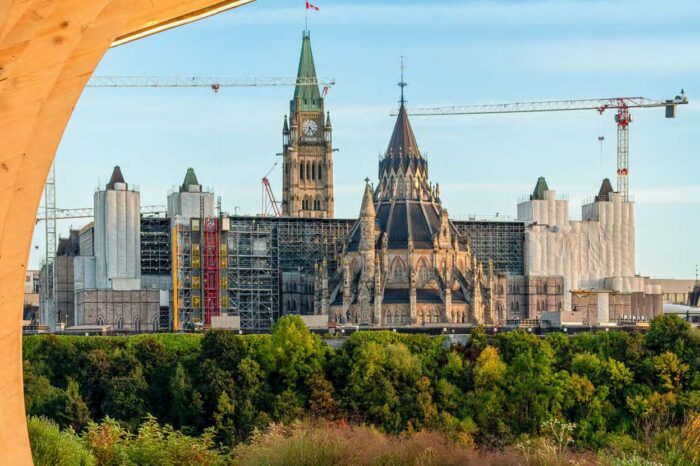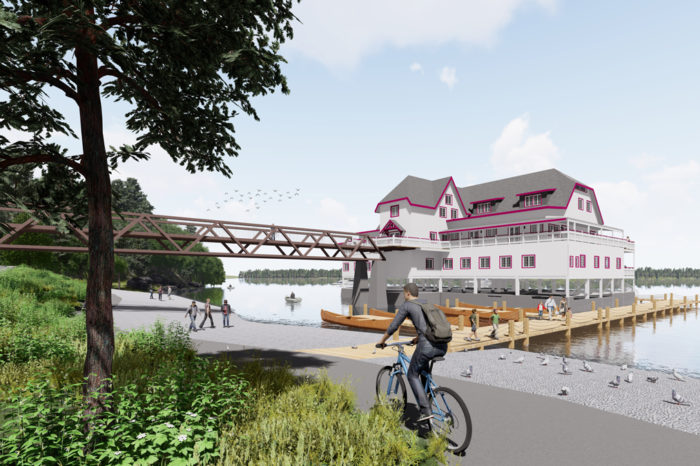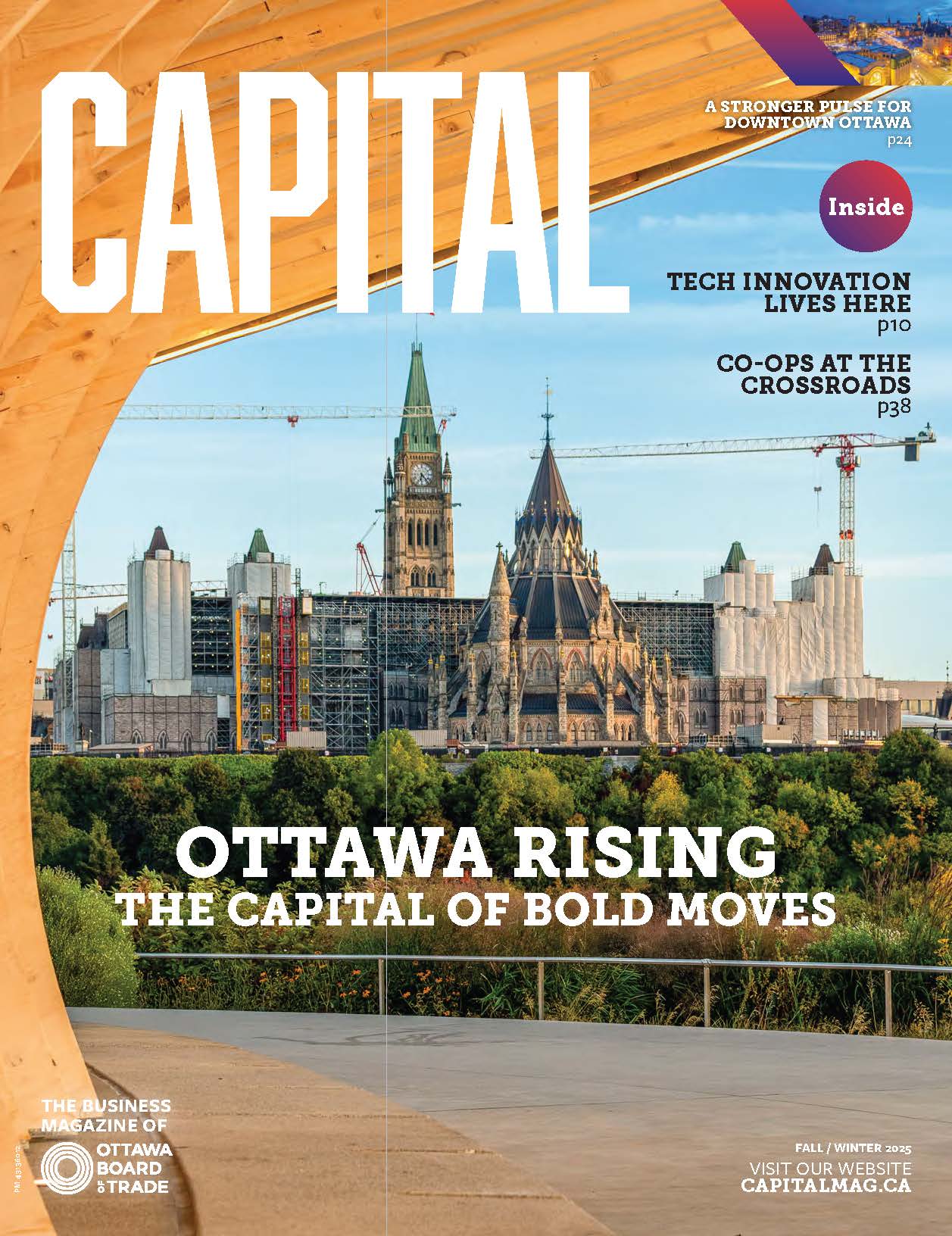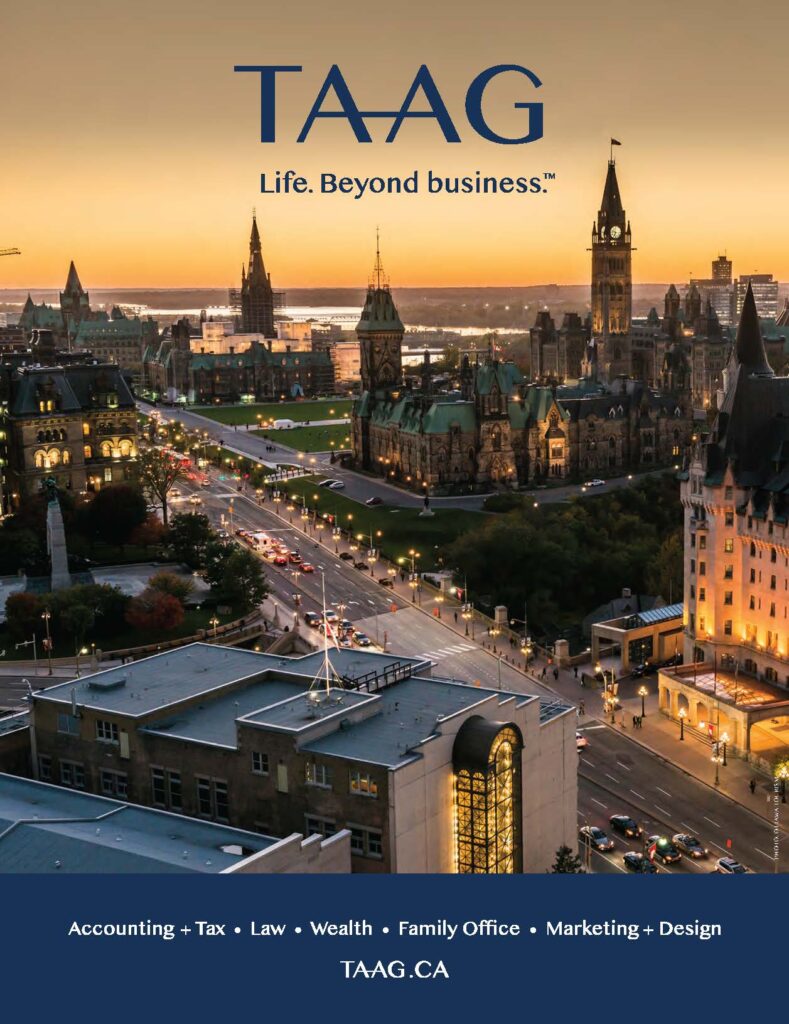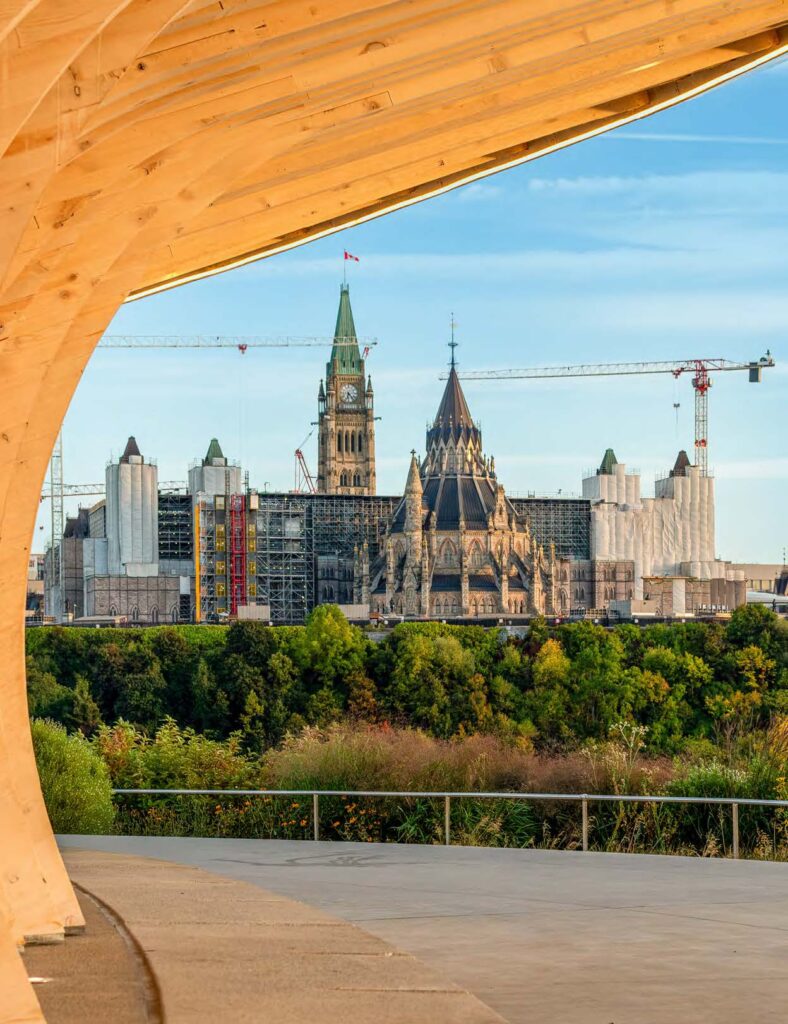Powering Our Nation’s Capital Toward a Sustainable Energy Future

Chaudiere Falls
For most of today’s utilities, powering homes and businesses is more than just supplying safe, reliable and cost-effective energy. It requires a vision for environmental sustainability and investing in the production of clean, renewable and sustainable energy.
That vision — to support a vibrant and sustainable capital — is a guiding principle at Hydro Ottawa, the third-largest municipally owned electrical utility in Ontario. Simply put, says President and CEO Bryce Conrad “it extends to our own operations and means making decisions that prioritize the environment and our city’s future as a major factor in how we define success.”
Hydro Ottawa owns and operates three subsidiaries: Hydro Ottawa Limited, which distributes electricity across the nation’s capital; Portage Power, which generates 128 megawatts of clean renewable energy powering 107,000 homes and businesses annually; and Envari Energy Solutions, which offers large-scale sustainable energy solutions for businesses, governments and utilities.
The utility company has adopted an end-to-end approach to sustainability – transitioning to cleaner energy production, helping customers conserve energy and lead energy-efficient lifestyles, designing its head office facility to LEED Gold standards, implementing green technology, improving waste management, mitigating its environmental impact and creating a thriving ecosystem for pollinators species.
These measures have earned them the title of Canada’s Greenest Employers for a tenth year and positioned them as a community partner of the City of Ottawa’s Energy Evolution project, with Envari lending their expertise in energy solutions to help the City meet its net-zero operations target by 2040.
For the utility, it’s satisfying taking an active role in reducing the carbon footprint in Ottawa for generations to come. Even more satisfying are collaborations with the City that are charging the way forward:
The installation of solar panels on eight municipal buildings (with plans for additional installations);
The electrification of the City’s transportation fleet and the installment of electric vehicle charging stations across Ottawa;
Upgrading the systems at the City’s wastewater treatment plant, including replacing the plant’s three cogeneration engines, and adding a fourth, will eliminate 1,565 tonnes of CO2 per year; and
Converting the City’s streetlights with LEDs, which, with its adaptive dimming and asset management control system, has decreased the city’s carbon dioxide emissions by a remarkable 1,200 metric tonnes every year, and translates into a 55 per cent reduction in energy consumption.
Combatting climate change and transforming Ottawa into a thriving city is among the most important challenges of our time. It also represents one of the greatest opportunities for collaboration across all sectors.
Perhaps one of the most compelling collaborations is the Zibi, Hydro Ottawa and Kruger Products partnership. A first in North America, this innovative system using district energy for heating and cooling will create the first zero-carbon-emission community in the region helping both the City of Ottawa and la Ville de Gatineau meet their climate goals.
“Zibi’s district energy system is a testament to the power of connection – through partnership, innovation, and a desire to create a future far more sustainable than the past,” says Conrad.
Next to Zibi, is Chaudière Falls – a true community asset and home to Canada’s oldest hydroelectric station still in operation. Once responsible for lighting Ottawa’s streets with electricity and fuelling the industrial explosion of the mid-1800s, it is now a subsidiary of Hydro Ottawa, operated by Portage Power.
Combatting climate change and transforming Ottawa into a thriving city is among the most important challenges of our time. It also represents one of the greatest opportunities for collaboration across all sectors.
The expanded operation includes a new below-grade 29-megawatt hydroelectric facility that feeds into the provincial grid and powers 20,000 homes with clean, renewable energy; reducing greenhouse gas emissions by 115,000 metric tons of CO2 every year.
The new site serves as a tourist attraction – offering safe viewing platforms and a new bridge across the intake canal. Since the COVID-19 pandemic, Chaudière Falls has remained closed to school and general public tours that would otherwise be experienced on the expanded grounds but launching this summer, it will now be possible to take a virtual tour of one of Ottawa’s most stunning natural landmarks.
Hydro Ottawa continues to expand its hydroelectric capacity as well as look for opportunities to further invest in alternative energy solutions for the future.
“We believe it’s our responsibility to be the change-makers necessary to help build a smart energy future for our Nation’s Capital,” says Conrad.
